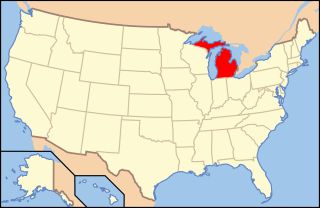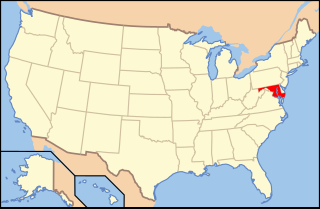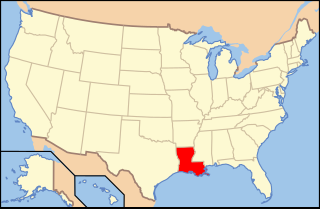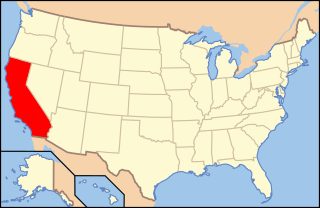The American mastodon
The American mastodon is an extinct species of proboscidean mammal, Mammut americanum (Kerr, 1792) (Animalia, Chordata, Vertebrata, Mammalia, Proboscidea, Mammutidae). The only living proboscideans are the African elephants ( Loxodonta africana and Loxodonta cyclotis ) and the Asian elephant ( Elephas maximus ). Mammut americanum had a widespread distribution during the Pleistocene. Its fossil remains are found from Alaska to Florida, but are most commonly encountered in eastern America. On average, the American mastodon was around 5 meters long, 3 meters tall at the shoulder, and weighed between 3,500 and 4,500 kilograms. Living mastodons were covered with coarse, brownish hair, unlike modern elephants. Thick body hair on Pleistocene pachyderms was likely an evolutionary adaptation to harsh wintry climates.
Remains of more than 150 mastodons have been reported in Ohio, but only about a dozen or so are semi-complete. The Burning Tree Mastodon was approximately 30 years old at the time of its death and is 90-95% complete, missing only the right rear leg, a few tail bones, two ribs, and all the toe bones. The lower spine and right rib cage have healed injuries which have been interpreted as the result of battles with other mastodons.
Preserved stomach contents and intestinal contents were also recovered.
Diet
In addition to being near-complete, the Burning Tree Mastodon is remarkable in other ways. Preserved stomach contents indicated a diet of moss, seeds, leaves, water lilies, and swamp grass. Before this discovery, American mastodons were interpreted as having diets consisting principally of twigs and cones from evergreen trees.
Bacteria
Additionally, 38 species of still-living gut bacteria were isolated from preserved intestinal contents. [1]
These ancient bacteria were, for a while, considered the oldest known living organisms anywhere on Earth. However, still-living gut bacteria have been isolated from insects in early Cenozoic amber and viable halobacteria have been recovered from Paleozoic and even late Precambrian rock salt.
The original Burning Tree Mastodon skeleton was sold in 1993 for over US$600,000; currently, it resides in a museum in Japan.

Pataskala is a city in Licking County, Ohio, United States, approximately 19 miles (31 km) east of Columbus. The population was 17,886 at the 2020 census. Pataskala was a small community until 1996, when what was then the village of Pataskala merged with Lima Township, vastly increasing its population and geographic area.

Stewiacke is a town located in southern Colchester County, Nova Scotia, Canada. The town was incorporated on August 30, 1906.

A mastodon is a member of the genus Mammut, which was endemic to North America and lived from the late Miocene to the early Holocene. Mastodons belong to the order Proboscidea, the same order as elephants and mammoths. Mammut is the type genus of the extinct family Mammutidae, which diverged from the ancestors of modern elephants at least 27–25 million years ago, during the Oligocene.

Mammutidae is an extinct family of proboscideans belonging to Elephantimorpha. It is best known for the mastodons, which inhabited North America from the Late Miocene until their extinction at beginning of the Holocene, around 11,000 years ago. The earliest fossils of the group are known from the Late Oligocene of Africa, around 24 million years ago, and fossils of the group have also been found across Eurasia. The name "mastodon" derives from Greek, μαστός "nipple" and ὀδούς "tooth", referring to their characteristic teeth.

The Great Serpent Mound is a 1,348-feet-long (411 m), three-feet-high prehistoric effigy mound located in Peebles, Ohio. It was built on what is known as the Serpent Mound crater plateau, running along the Ohio Brush Creek in Adams County, Ohio. The mound is the largest serpent effigy known in the world.

Fort Ancient is a Native American earthworks complex located in Washington Township, Warren County, Ohio, along the eastern shore of the Little Miami River about seven miles (11 km) southeast of Lebanon on State Route 350. The site is the largest prehistoric hilltop enclosure in the United States with three and one-half miles (18,000 ft) of walls in a 100-acre (0.40 km2) complex. Built by the Hopewell culture, who lived in the area from the 200 BC to AD 400, the site is situated on a wooded bluff 270 feet (82 m) above the Little Miami. It is the namesake of a culture known as Fort Ancient who lived near the complex long after it was constructed.

The Columbian mammoth is an extinct species of mammoth that inhabited North America from southern Canada to Costa Rica during the Pleistocene epoch. The Columbian mammoth descended from Eurasian steppe mammoths that colonised North America during the Early Pleistocene around 1.5–1.3 million years ago, and later experienced hybridisation with the woolly mammoth lineage. The Columbian mammoth was among the last mammoth species, and the pygmy mammoths evolved from them on the Channel Islands of California. The closest extant relative of the Columbian and other mammoths is the Asian elephant.
Founded in 1958, the International Mineralogical Association (IMA) is an international group of 40 national societies. The goal is to promote the science of mineralogy and to standardize the nomenclature of the 5000 plus known mineral species. The IMA is affiliated with the International Union of Geological Sciences (IUGS).

Cuvieronius is an extinct New World genus of gomphothere which ranged from southern North America to western South America during the Pleistocene epoch. Reaching a shoulder height of 2.3 metres (7.5 ft) and a body mass of 3.5 tonnes (7,700 lb), it was on average shorter but comparable in body mass to an Asian elephant. Cuvieronius inhabited subtropical and tropical latitudes in environments ranging from grasslands to tropical rainforest. Among the last gomphotheres along with the South American Notiomastodon, it became extinct as part of the end Pleistocene-extinction event, approximately 12,000 years ago, along with most other large mammals in the Americas. The extinctions followed the arrival of humans to the Americas, and evidence has been found for human hunting of Cuvieronius, which may have been a factor in its extinction.

Prehistory of Ohio provides an overview of the activities that occurred prior to Ohio's recorded history. The ancient hunters, Paleo-Indians, descended from humans that crossed the Bering Strait. There is evidence of Paleo-Indians in Ohio, who were hunter-gatherers that ranged widely over land to hunt large game. For instance, mastodon bones were found at the Burning Tree Mastodon site that showed that it had been butchered. Clovis points have been found that indicate interaction with other groups and hunted large game. The Paleo Crossing site and Nobles Pond site provide evidence that groups interacted with one another. The Paleo-Indian's diet included fish, small game, and nuts and berries that gathered. They lived in simple shelters made of wood and bark or hides. Canoes were created by digging out trees with granite axes.

Notiomastodon is an extinct genus of gomphothere proboscidean, endemic to South America from the Pleistocene to the beginning of the Holocene. Notiomastodon specimens reached a size similar to that of the modern Asian elephant, with a body mass of 3-4 tonnes. Like other brevirostrine gomphotheres such as Cuvieronius and Stegomastodon, Notiomastodon had a shortened lower jaw and lacked lower tusks, unlike more primitive gomphotheres like Gomphotherium.

Paleontology in Michigan refers to paleontological research occurring within or conducted by people from the U.S. state of Michigan. During the Precambrian, the Upper Peninsula was home to filamentous algae. The remains it left behind are among the oldest known fossils in the world. During the early part of the Paleozoic Michigan was covered by a shallow tropical sea which was home to a rich invertebrate fauna including brachiopods, corals, crinoids, and trilobites. Primitive armored fishes and sharks were also present. Swamps covered the state during the Carboniferous. There are little to no sedimentary deposits in the state for an interval spanning from the Permian to the end of the Neogene. Deposition resumed as glaciers transformed the state's landscape during the Pleistocene. Michigan was home to large mammals like mammoths and mastodons at that time. The Holocene American mastodon, Mammut americanum, is the Michigan state fossil. The Petoskey stone, which is made of fossil coral, is the state stone of Michigan.

Paleontology in Maryland refers to paleontological research occurring within or conducted by people from the U.S. state of Maryland. The invertebrate fossils of Maryland are similar to those of neighboring Delaware. For most of the early Paleozoic era, Maryland was covered by a shallow sea, although it was above sea level for portions of the Ordovician and Devonian. The ancient marine life of Maryland included brachiopods and bryozoans while horsetails and scale trees grew on land. By the end of the era, the sea had left the state completely. In the early Mesozoic, Pangaea was splitting up. The same geologic forces that divided the supercontinent formed massive lakes. Dinosaur footprints were preserved along their shores. During the Cretaceous, the state was home to dinosaurs. During the early part of the Cenozoic era, the state was alternatingly submerged by sea water or exposed. During the Ice Age, mastodons lived in the state.

Paleontology in Louisiana refers to paleontological research occurring within or conducted by people from the U.S. state of Louisiana. Outcrops of fossil-bearing sediments and sedimentary rocks within Louisiana are quite rare. In part, this is because Louisiana’s semi-humid climate results in the rapid weathering and erosion of any exposures and the growth of thick vegetation that conceal any fossil-bearing strata. In addition, Holocene alluvial sediments left behind by rivers like the Mississippi, Red, and Ouachita, as well as marsh deposits, cover about 55% of Louisiana and deeply bury local fossiliferous strata.

Paleontology in California refers to paleontologist research occurring within or conducted by people from the U.S. state of California. California contains rocks of almost every age from the Precambrian to the Recent.
The Mineralogical Society of Great Britain and Ireland was founded in 1876. Its main purpose is to disseminate scientific knowledge of the Mineral Sciences (mineralogy) as it may be applied to the fields of crystallography, geochemistry, petrology, environmental science and economic geology. In support of this vision, the society publishes scientific journals, books and monographs. It also organizes and sponsors scientific meetings, and the society connects with other societies which have similar scientific interests. Some of these other societies are the International Mineralogical Association, the European Mineralogical Union, the Mineralogical Society of America, the Mineralogical Association of Canada, the Geological Society of London, IOM3, the North of England Institute of Mining and Mechanical Engineers and the Microbiology Society.

The Portage Escarpment is a major landform in the U.S. states of Ohio, Pennsylvania, and New York which marks the boundary between the Till Plains to the north and west and the Appalachian Plateau to the east and south. The escarpment is the defining geological feature of New York's Finger Lakes region. Its proximity to Lake Erie creates a narrow but easily traveled route between upstate New York and the Midwest. Extensive industrial and residential development occurred along this route.
Bradley Thomas Lepper is an American archaeologist best known for his work on ancient earthworks and ice age peoples in Ohio. Lepper is the Curator of Archaeology and Manager of Archaeology and Natural History at the Ohio History Connection.

The research history of Mammut is extensive given its complicated taxonomic and non-taxonomic histories, with the earliest recorded fossil finds dating back to 1705 in Claverack, New York during the colonial era of what is now the United States of America. Initially thought to belong to biblical antediluvian giants, the fossils were later determined to belong to a proboscidean species as a result of more complete 18th century finds from the locality of Big Bone Lick in what is now Kentucky. The molars were studied by European and American naturalists, who were generally baffled on its lack of analogue to modern elephants, leading to varying hypothesis on the affinities of the teeth. More complete skeletons were found after the independence of the United States colonies from Great Britain within the early 19th century. American historians of the 21st century have made arguments that the early history of M. americanum finds and studies played major roles in shaping American nationalism on the basis of the large sizes and relative completeness of the fossils to disprove the negative theory of social degeneracy in North America.


















